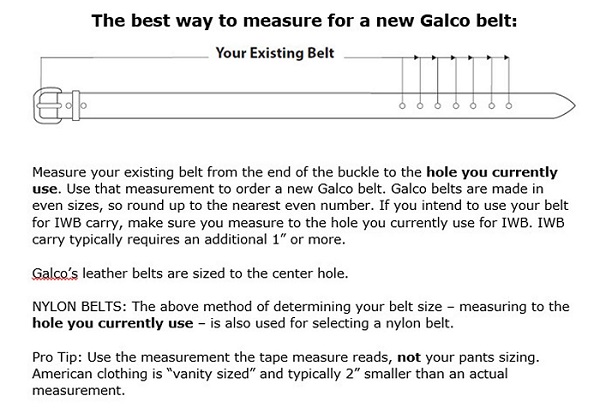Frequently Asked Questions
Information about the safe use of firearms and Galco products.
Galco uses secure Pull-The-DOT and Lift The Spot snaps, commonly known as one-way snaps, on most non-Slot Lock ™ belt loops, in order to prevent unintentional unsnapping of a holster/ammo/accessory carrier from the belt. Once you know the simple trick to operating a one-way snap, it’s very easy. One-way snaps are fastened by using a downward rolling motion and must be started at their flat spot.
Step 1: Socket and Stud Identification
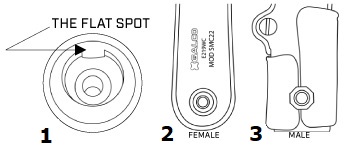
Fig. 1, (female) socket flat spot close-up
Fig. 2, socket shown on typical product
Fig. 3, (male) stud
Step 2: Snapping Closed
Insert by hooking the edge of the stud under the socket’s flat spot and rolling the remainder of the socket downward until fully snapped (fig. 4).
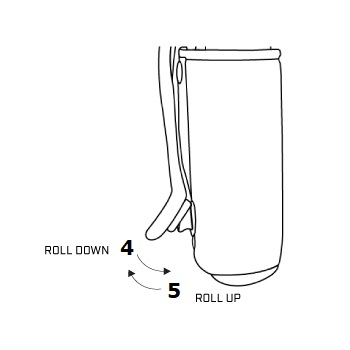
One-way snaps are unfastened by using an open rolling motion that must be started by pulling the dot on the cap, if present (fig. 5). This is opposite the flat spot, making opening the reverse of closing.
There is often a generational perception that metal is superior in durability. Depending on the application, this may be true. But for people living in warm and/or humid climates, and for items constantly exposed to bodily moisture (like concealed carry holsters), polymer is very often a better option. We’ve been using polymers on the Flexalon swivel plate found on our harnesses, and for the double swivel keepers on shoulder holsters and ammo carriers, for nearly five decades. These items now have a long and successful history of use in very rugged environments by military and law enforcement personnel. With tens of thousands of the new polymer fasteners in use, there have been no problems with them disengaging or breaking, nor have we seen issues with them being lost (when properly installed in the harness).
Finally, installing the new fasteners requires no tools, making it extremely easy to swap out components and make fit adjustments.
Although more costly, the newer injection molded polymer harness fasteners are simply a superior product, and a better method for securing the shoulder system’s adjustments. We are 100% confident your Galco shoulder rig will serve you well.
In general, holsters should offer a full firing grip. A firing grip in the holster is ideal. Your grip on the gun in the holster should be the same grip you have when the gun is at full extension and ready to fire. Anything less may impede your draw because you’ll need to shift and adjust your grip as you bring the gun on target. Shifting reduces speed and requires extra caution to avoid fumbling the firearm.
A modification to the full firing grip is made for some body and clothing types, especially for IWB appendix carry, where we might trade a full firing grip for deeper concealment. Here we’d use a "pinch draw," which is the compression of the thumb and forefinger at the web of the hand. This more advanced technique uses the top of the hand to pull up from the holster, enabling the user to wrap the middle, ring and pinky fingers around the grip as space is created.
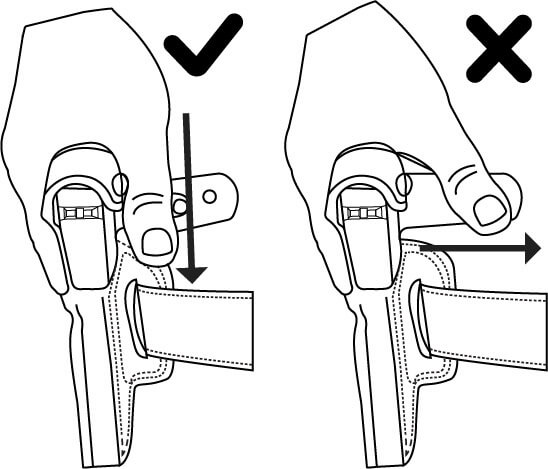
Information on Galco's materials and manufacturing.
Premium Center Cut Steerhide™ is an extremely durable steerhide with the outer and inner layers removed, resulting in a napped texture on both sides of the leather. It has an outer layer finish that is ideal for inside the waistband and pocket holsters due to the natural “grabbing” ability of the napped leather. Center Cut Steerhide works equally well for general holster designs both because of its sturdiness and because its exterior does not show scuffing or scratches.
Galco’s Premium Saddle Leather is our full-grain premium leather cut. Unlike our Premium Center Cut Steerhide, the smooth outer layer of the leather remains intact, while the other side retains a traditional flesh finish. The smooth side of the leather will usually be on the outside of the holster, though in the limited case of some inside the waistband holsters, the smooth side of leather will be on the inside. Our uncorrected full-grain prime back cuts are inspected several times at the tannery and in our facility. All of our hides are of the highest “Number One” grade (out of seven possible grades), which guarantees that Galco Premium Saddle Leather Holsters are made from the top 2% of vegetable-tanned steerhides available in the US.
It’s important to note that Galco makes a wide range of products, with holsters starting in the $40 range. The differences in price within our line are representative of material used, features included and simply the time required to make that item. In many cases, Galco products are very competitively priced, even when compared to competitor’s products that are noticeably lacking in quality, features and/or attention to detail.
At the upper end of our line, Galco’s pricing is reflective of offering the highest-quality belts, holsters and sporting accessories in the industry. We make all our products right here in Phoenix, Arizona rather than outsourcing our manufacturing to Mexico, Paraguay, Turkey, Vietnam or China like so many of our competitors.
The purchase of a Galco product supports our providing health care and a living wage to a US manufacturing workforce, a concept that’s foreign (no pun intended) to our competitors who manufacture in third world countries. We purchase from the top 2% leather quality available in America. We comply with and pay for every federal, state and local government mandate. We give particular attention to those regulations protecting the environment and worker safety, which are much stricter in the USA than in the third world nations where many of our competitors choose to manufacture.
Galco believes that the rewards of manufacturing in the USA far offset any disadvantages, but it does require us to charge a little more compared to those made in the developing world. Fortunately, the overwhelming majority of our customers agree with us. These customers have continued to purchase our American-made products for over 50 years because they Demand the Best and Know the Difference.
Many of our loyal customers have used a holster or belt under tough field conditions for 20+ years. A single visit to the shooting range (factoring in ammo) costs about the same as a top-quality Galco holster or belt that, with proper care, can last literally decades. That seems like a bargain.
Holster models designed to accommodate carry-style micro red dot optic (MRDO) sights are denoted by the “R” in the product code’s suffix. For example, a Triton 3.0 holster for the Glock 19 and compatible with an MRDO will be indicated by the product code TR3-226RB. (The exception is our exotic stingray holsters, whose product codes predate common optical handgun sights.)
Galco is continuously adding to our new holster designs and retrofitting existing designs, where possible, to accommodate MRDO sights. Most true MRDOs are compatible with Galco holsters denoted by an “R”, depending on design, size and location on the slide or top strap (of a revolver).
However, large-window and/or cantilevered competition-oriented optics may not fit all Galco holsters. Examples of competition-oriented optics include the Trijicon SRO, Holosun 507 Comp, and Swampfox Justice II. Note that, even though a large optic may fit in one Galco holster model, it may not work in another model.
History:
Initially, gunsmiths milled away metal and attached red dot sights (RDS) to pistols with inconsistent locations. As firearm manufacturers got on board with factory-optioned MRDO slide cutaways, optic positioning generally moved farther rearward, sometimes with rear sight elimination, relocation, or integration with the optic itself.
As carry optics evolve, we see less demand for co-witnessing, due to improvements in MRDO reliability. Lower “deck heights” on modern MRDOs also often allow co-witnessing with factory sights or equivalent.
Integrated carry optics on even subcompact pistols continue to gain popularity as the size of MRDOs shrink with advancements in technology. The combination of the evolution of MRDO size, integration and placement makes it the most inconsistent factor to accommodate when making a holster we’ve seen in over a half-century of holster making.
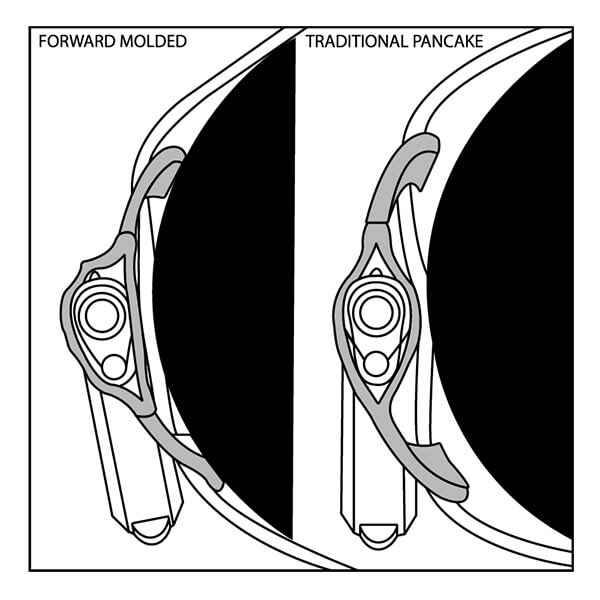
Galco offers several options in magazine carriers for our modular shoulder holster systems. These designs include double vertical with retention straps (SCL), double horizontal open-front (HCL), and quadruple horizontal with removable retention straps (QCL). Each design has unique advantages.
The SCL uses straps on each magazine along with tension units for the most secure retention. Shorter magazines (for the Glock 26, for example) are simply pulled down to contact the retention strap for most effective grasp when reloading. The SCL comes standard on the Miami Classic and VHS 4.0.
The HCL is flatter because it does not use straps. This sometimes makes it more comfortable under the arm. It is also faster because of its horizontal orientation and lack of straps, and it accommodates extended magazines. The HCL comes standard on the Miami Classic II.
The QCL carries four spare magazines and offers the option of using straps for added security or removing them for faster, simpler access and use of extended magazines. The QCL is available as an optional purchase and can be added to any of our modular shoulder holster systems. (Does not work with chest holsters.)
Some added notes about shoulder system magazine carriers:
Full size pistols: system mag carrier will not accommodate extra-capacity or extended magazines, including those provided as OEM equipment. For extended magazines, select the Extended Double Mag Carrier, Horizontal Mag Carrier or Quad Mag Carrier.
Compact/subcompact pistols: if a full-size version of your pistol is available, the mag carrier will generally also accommodate magazines from the full-sized pistol. Again, shorter magazines are simply pulled down to contact the retention strap for most effective grasp when reloading.
Sleeved Magazines: double magazine carriers may not properly accommodate magazines with exterior sleeves, as the baseplates will rub together.
Please contact Galco customer service for further clarification as needed.
